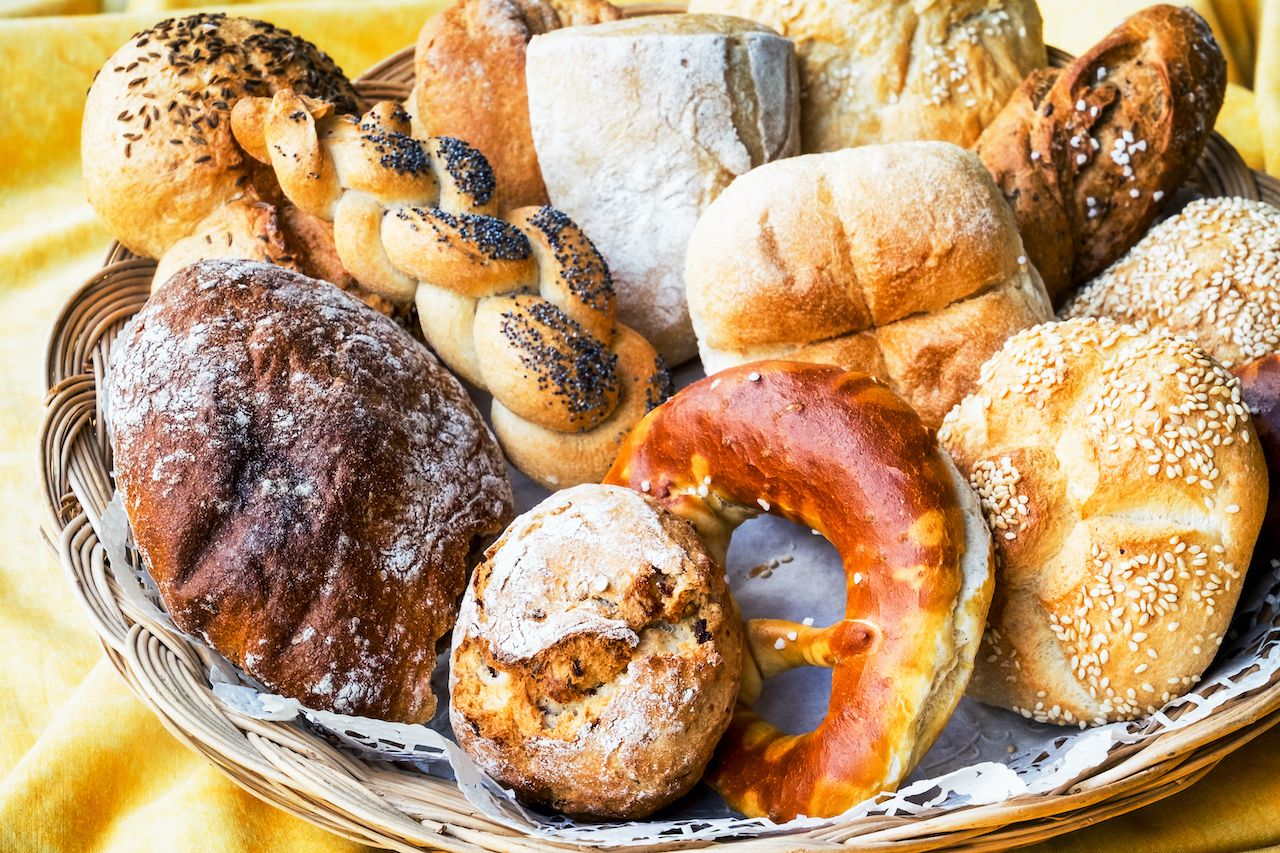📜 A Brief History of Bread 🌾
Bread, in all its various forms, is the most widely consumed food in the whole world. Not only is it an important source of carbohydrates, it’s also portable and compact, which helps to explain why it has been an integral part of our diet for thousands of years. In fact, recent scholars suggests humans started baking bread at least 30,000 years ago.
Prehistoric man had already been making gruel from water and grains, so it was a small jump to starting cooking this mixture into a solid by frying it on stones. A 2010 study by the National Academy of Sciences discovered traces of starch (likely from the roots of cattails and ferns) in prehistoric mortar and pestle-like rocks. The roots would've been peeled and dried before they were ground into flour and mixed with water. Finally, the paste would've been cooked on heated rocks.
But how did humanity get from this prehistoric flatbread to an
ultra-fluffy, grocery store loaf? There were three primary innovations
that created “modern” bread.
Learn more on History.com
🇩🇪 What's so special about German bread? 🥨

When it comes to countries that belong in the pantheon of all-time-great culinary traditions, Germany cannot be overlooked. Not only are their huge steins of beer legendary, but they also boast an epic variety of sausages. However, Germany is often overshadowed by the glamorous olive-oil-drizzled Italian focaccia and the puffy flakey French croissants or the long golden baguettes, German bread is nonetheless arguably the best in the world.
In Germany, that processed white bread common in countries like the UK is called "toastbrot". It's available, but it's not as popular as the signature German loaf. There are more options for discerning bread lovers, where you can find over 3000 different types of bread in Germany... Here's a closer look at the German bread culture.
There are three major types of grains for bread: spelt, wheat, and rye or in German they're called "Dinkel", "Weizen", and "Roggen". Although, there are so many ways to make bread, there are too many to choose from. What's your pick?